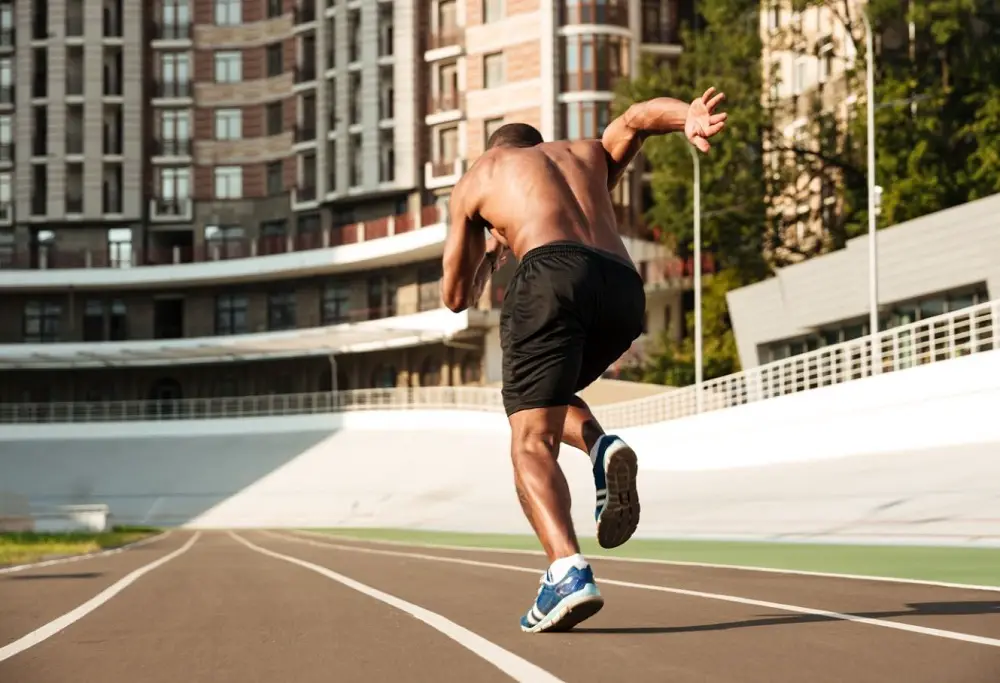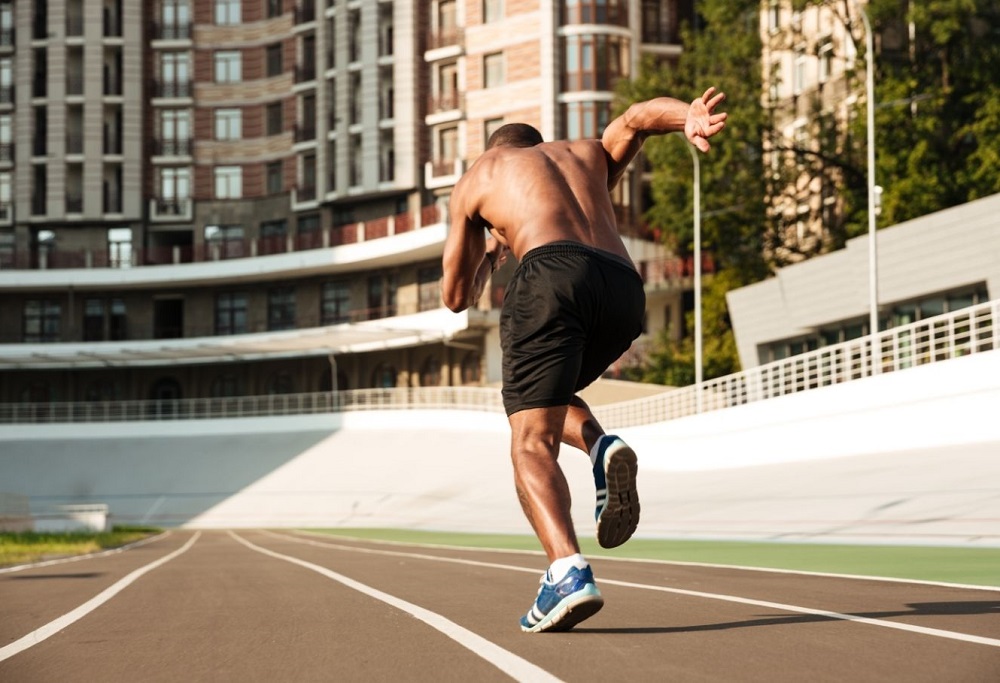Running is one of the most popular forms of exercise for an abundance of reasons – it’s totally free (if you’re not running on a treadmill in a gym), it’s good for your joints, and it’s a great form of cardio to lose weight. But does running build muscle?
We all know that there are exercises designed specifically to build muscle, such as squats, pull ups, the bench press, weight training, and more. There’s a common misconception that because running is a cardio exercise, it doesn’t build muscle in the same way as it burns fat.

If you’re looking into committing to running to solely build muscle, or if you’re wondering what the benefits of running are, you’ve come to the right place. Here is everything you need to know about the age old question: does running build muscle?
So…does running build muscle?
The short answer to this question is: yes, running does build muscle. However, it’s not as simple as it may seem.
Running is a fairly inconsistent activity. Some people will run sporadically throughout the week, while others will run a certain distance every day. This means that one running session will not help to build muscle, nor will several weeks of running.
Unlike muscle-building exercises like squats and weight training, running is first and foremost a cardio exercise that works to move the body and burn fat. This means that any muscle built during running is an added bonus to the exercise, and not the main reason to commit to it.
How does running build muscle?
The reason why running can slowly build muscle is that running uses a lot of muscles in the lower body – including the glutes, quads, and hamstrings.
Any form of repetitive exercise that uses a particular muscle will encourage the muscle to grow overtime, and as running features a repetitive motion, it only makes sense that these particular muscles will begin to strengthen.
However, that’s kind of it. Running doesn’t build an awful lot of muscle mass, because running isn’t a muscle-building exercise. If you’re looking to build muscle mass, you’ve got to incorporate other exercises and other factors into your lifestyle.
Muscles rely on consistency as much as variation, so sticking to one exercise isn’t enough to satisfy every muscle group.
If you want to build muscle whilst sticking to a running routine, then you’ve got to incorporate other exercises. Ditch the long distance running sessions, because these are only designed for stamina. Stick to fast sprints, as this will encourage muscular hypertrophy.
You’ll need to create some sort of workout routine that allows you to focus on particular muscle groups – for example, focus on leg day and then abs day with a run in between.
You’ve also got to consider how often you exercise. Running is great to do daily, but running outdoors can lead to accidental injuries (especially on uneven terrain), which will only prevent your muscles from building. Likewise, only going for a run once a week won’t train your muscles to strengthen or build.
Will I Lose Muscle if I Run?
Here’s where it gets complicated. If you don’t pair your running sessions with muscle-building exercises, then running as a solo exercise will result in a loss of muscle mass. Feels a bit unfair, doesn’t it?
If you don’t fuel your body with the right type of food and if you don’t combine running with other muscle-building exercises, then you will lose muscle as well as fat. This is because you’re not allowing your body time to train the muscles to grow.
It mostly comes down to nutrition. If you’re looking to run just for weight loss, stick to a high-protein and low-carb diet. If you’re looking to run to build muscle, opt for a high-protein and moderate-carb diet.
Carbohydrates are an excellent source of energy (particularly slow-burning complex carbohydrates like sweet potatoes) that provide adequate calories that your body will transform into fuel, which can allow you to run faster and for longer periods.
If you run on an empty stomach, or perhaps from the fuel of candy or energy drinks, chances are your body will only burn off the sugar that your body has just consumed. This form of running is pretty redundant, because it won’t touch on your muscles at all.
Does Running Make your Butt Bigger?
Unfortunately, running as a solo exercise will not make your butt bigger. You will need to combine your running sessions with glute-specific exercises. Running does work to strengthen and use the glute muscles, but the best form of running for this is sprinting.
Sprinting uses type II fibers that are better for building muscle compared to long-distance running that uses type I fibers, which are used for strengthening endurance.
Should I Run Before or After Workout?
Running is an excellent all-rounder form of exercise that can be done either before or after a workout as a warm-up or cool-down exercise. However, if you’re looking to use running to your advantage, there is a general rule of thumb that indicates the best time to run.
If you’re looking to build muscle, run before a workout. If you’re wanting to build endurance and stamina, run after a workout. This is because your body will remember the last exercise you complete longer than previous exercises.
Thus, if you end a workout with a run, your body will be naturally targeting stamina and endurance. Alternatively, if you end a workout with squats, then your muscles will remember this exercise the most.
However, each body will work differently, so it might be worth changing your workout routine every few days.
For example, run before the first 3 workouts in your week, and then run after the last 2 workouts in your week. It’s up to you, but remember that consistency is key, so stick to a routine once you’ve found it!
Conclusion
So, there you have it. Running does build muscle, but only if it is combined with the right type of diet and other muscle-building exercises.

